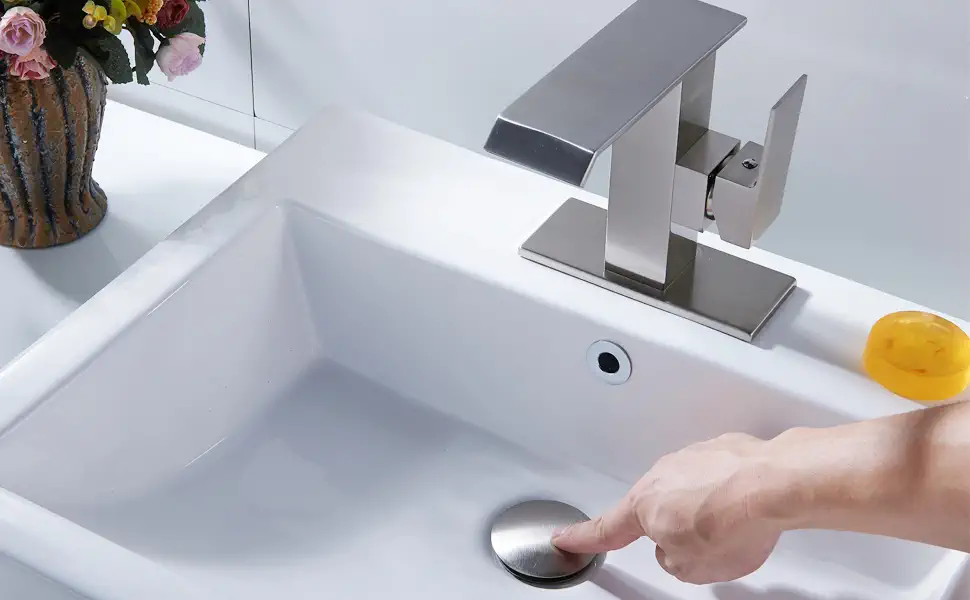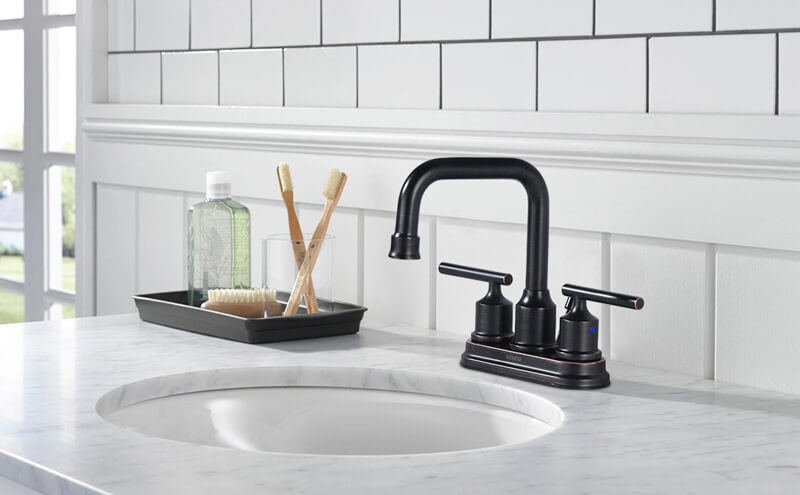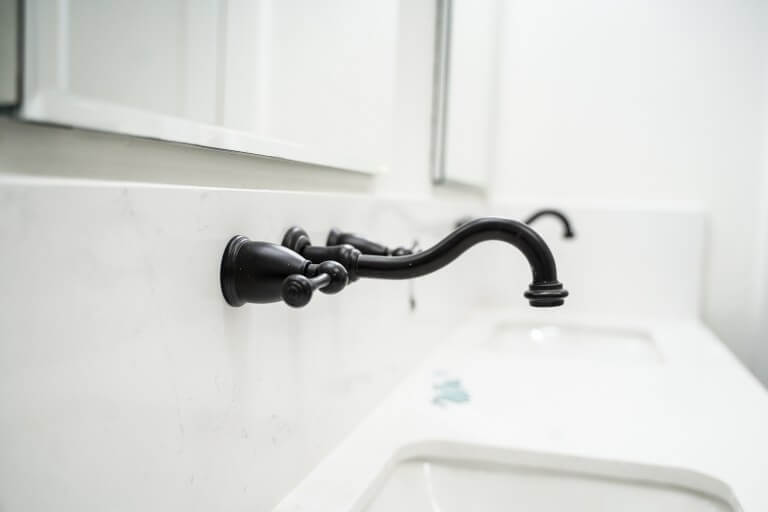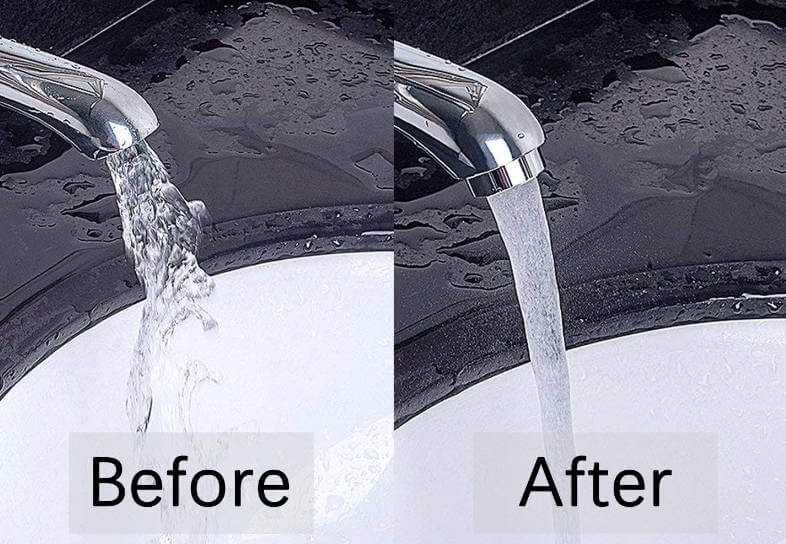How to Fix a Leaky Faucet

Drip. Drip. Drip.
The sound of a leaky faucet is one that is by all means obnoxious. Not only is the bothersome pitter patter of this problem annoying, but it also serves as a reminder: tons of water is being wasted while your faucet risks deterioration.
A mistake that many people make is procrastinating. They let the leak continue to persist, allowing it to worsen over time.
Here’s the truth — you should never fear a leaky faucet!
In fact, it is very easy to fix a leaky faucet even an amateur can handle with a little time and effort. Read on to understand more about this problem and how you can quickly make the dripping a thing of the past.
Table of Contents:
Dangers of a leaky faucet
While many people recognize that a leaky faucet is a problem, few realize how damaging it can truly be. There are several negative effects caused by the issue, leading to more headache in the long run.
Water Loss
The most obvious example of a problem caused by a faucet leak is water loss. While the drips may not seem like much, in reality, they are wasting a huge amount of water. The Environmental Protection Agency estimates that a home’s leaks can cause about 10,000 gallons of water to be lost annually.
This waste not only negatively impacts the environment, but also your monthly water bill. A leak that is not taken care of slowly bumps up the price of your bill, accumulating to make it much more expensive than it otherwise would have been. Fixing the faucet can allow you to save about 10% of your yearly water bill.
Home Damage
When a leak is not properly taken care of, it can wreak havoc on your plumbing. From drain clogs to overflows, the normal operations of your plumbing system will be at a standstill.
Also, leaks can deteriorate caulk and grout near the sink, raising the potential of the water seeping through the floors, walls, and ceilings. This problem can even be so bad that it leaves a stain in your sink that often requires the purchase of a new one.
Mold
Arguably, the most dangerous result of a leaky faucet that has not been tended to is mold. The conditions left by the standing water allow for the substance to quickly grow. Mold can present a variety of health risks to those living in the household. Additionally, it can create cost concerns due to having to hire a professional to get rid of it.
Causes of a leaky faucet
Before getting into fixing the faucet, it is important to understand some of the common causes of this problem. There are a range of factors that can contribute to a leaky faucet. Knowing what these are can allow you to be more proactive, ensuring that it is not something that continues to be a hassle. There are four main causes for the issue:
Malfunctioning O-Rings
The O-Ring is a small disk that is located within the faucet of the sink. It can be found attached to the stem screw, holding the handle of the faucet properly in place. Over time, the O-ring can become worn out and loose (this is just because of normal day to day use). If the leak is coming from the handle, the O-ring is most likely the culprit.
Broken Cartridges
A cartridge faucet has handles with specific functions: one releases hot water while the other releases cold water. The actual cartridge is a valve that controls how much water is going into the spout. When it is damaged, it can disrupt this flow and cause leaks.
Broken Washers
Broken washers are often the most common cause of a leaky faucet. Overtime, friction can make the washers less effective making them eventually wear out. Along with this, sometimes when new faucets are installed, the washers put in are the wrong size or not placed properly. Both of these situations can create leakage.
Damaged Valve Seat
The valve seat is the piece that connects the faucet to the water spout. Dirt, grime, and sediment can build up, corroding the seat and allowing for water to leak out; if the leak is coming from the spout this is usually the problem.
Types of faucets
Although the process of repair is generally similar, it will differ depending on the type of faucet that you are working on. There are four common types of faucets that are most usually found in homes: cartridge faucets, disc faucets, compression washer faucets, and ball faucets.
Before starting a repair process, you should accurately identify which type you will be working with. This will allow for you to disassemble the faucet more easily and ensure that the correct changes are being made. Here are a description of the different types so that you can see which one you are dealing with:
Ball Faucet
Ball faucets are usually found in the kitchen sink. They are recognizable by the single handle that is situated atop a ball-shaped cap. Inside the faucet, there is a plastic or metal ball inside (hence the name “ball faucet”) that controls the pressure. The ball has slots, rubber o-rings, and spring-loaded rubber seals that allow it to operate.
Cartridge Faucet
Cartridge faucets are characterized by their double handles. Each handle puts out its own water temperature (either warm or cold). With a simple turn of the handle the faucet turns on, allowing for the action to be easy and consistent — especially when compared to others such as the compression washer faucet.
Ceramic Disc Faucet
Disc faucets are more commonly found in modern kitchens. They use a single lever on top of a cylindrical structure. Inside, there is a chamber that mixes together cold and hot water, with the lever controlling how much of each comes out. It uses two ceramic discs that raise and lower in order to put out the right amount of water pressure.
Compression Washer Faucet
Compression washer faucets can often be found in older homes. They have been around the longest meaning the technology is not as up to par. The faucet has two handles — one on both sides — each controlling either hot or cold water output. They have to be tightened or turned loose to close and open the water flow. These characteristics make them the most likely to have leakage problems.
How to fix a leaky faucet
Before starting, make sure that you shut the water off to the sink. Next, prep your space to avoid any damage and make it easier to work on the sink. This can be done by covering the drain with a rag to collect droppage and laying out a section near the area for your tools.
Tape can be added to your wrench to protect the fixture from being scraped while white vinegar can be on hand to clean any mineral deposits from the parts. Follow along below to figure out how to fix the leak of your specific faucet type.
How to fix a compression faucet leak
- Use a flathead screwdriver or a utility knife to take off the cap on the handle. You should see the attachment screws inside.
- Remove and pull out the handle using a screwdriver.
- With an adjustable wrench, loosen the stem from the faucet. Unscrew the packing nut with a crescent wrench. Unscrew the rubber washer from the stem’s bottom before replacing the seat washer.
- Coat each washer with plumber’s grease (make sure it is heat resistant and non toxic).
- Remove the stem from the packing nut before replacing the O-ring (coat the ring in the plumber’s grease as well).
- Check the retainer (if it is damaged, you may need to install a replacement ring or ,in some cases, replace the seat).
How to fix a ball faucet leak
- Take off the cover from the side of the faucet using a knife or flathead screwdriver (the hex-head screw should be inside).
- Using a hex key wrench, loosen the screw and remove the faucet’s handle. Then, remove the cap and collar using adjustable pliers.
- Loosen and remove the faucet cam, rotating ball, and cam washer.
- Remove the rubber seats and springs with needle nosed pliers
- Insert the two new sets of seats and springs
- Reinstall the ball of the faucet (ensure that it is aligning properly with its corresponding tab).
- Install a new rubber gasket and cam cap on top of the ball. Use your hands to tighten the top cap back onto the structure.
- Tighten the nut under the ball with a spanner wrench.
How to fix a disc faucet leak
- Remove the screw (the handle must be pushed back to access it) and the handle.
- Take out the escutcheon cap, unscrew the mounting screws of the disk’s cylinder, and remove the cylinder itself.
- Use a screwdriver to remove the seals of the cylinder (damaged ones should be replaced). Clean the cylinder of any mineral deposits using the distilled white vinegar.
- Replace the seals before putting the faucet back together.
- Slowly run the water to allow the disk to readjust.
How to fix a cartridge faucet leak
- Take off the decorative cap before removing the handle screw (move the handle back to access the screw and pull it off).
- Use needle nosed pliers to remove the retaining clip (not all cartridge faucets will have this) before pulling the cartridge straight out.
- Remove the spout before removing the old O-ring with a utility knife.
- Coat the new rings with heat resistant, non toxic plumber’s grease before inserting them.
 WOWOW Faucets
WOWOW Faucets




